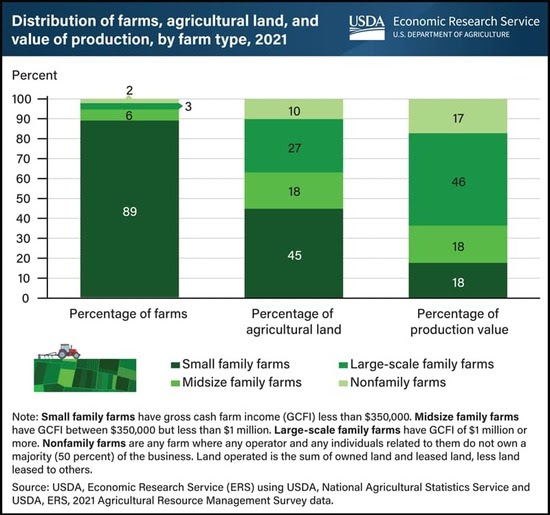|
News Bits
We have "re-inserted" the link to the Seed Innovation & Protection Alliance. The TSTA is a member and you likely are too. If not please join today! SIPA was discussed quite a bit at our recent membership meeting at Horseshoe Bay and they are a key player in protecting intellectual property.
BASF is getting out of the business of developing hybrid wheat seeds in North America, deciding to focus on Europe, where the company says it sees "the greatest opportunity to successfully bring this innovation to farmers."
BASF says that "despite the tremendous efforts of our expert teams, the results of our North American trials have not achieved the development goals we set to meet the needs of growers in Canada and the United States."
In 2021, BASF announced a new variety, Ideltis, saying it would be available to growers around the middle of the decade.
Source: House Committee on Agriculture news release
To view Chairman Thompson deliver his comments click here.
"Today's hearing has really shined a spotlight on the issues confronting producers and the entire agriculture sector from the farm to the consumer.
"Whether it is market volatility, weather risks, or wrongheaded government policy--much of which has been exacerbated by the Biden Administration--the House Committee on Agriculture has a responsibility to examine these challenges and develop responsible approaches to addressing them in the upcoming Farm Bill.
"Over the course of the next several months, the Committee will be holding numerous hearings and will be continuing our Farm Bill listening sessions at various locations across the country.
"I'd like to challenge my fellow Committee Members to be present and heavily engaged in this process.
"Getting the farm bill done right and on time will require a lot of work and attention from all of us, but we owe it to all our constituents--from producers to processors, and ultimately, to consumers--to get that policy right."
Illinois is home to the top corn and soybean producing counties in the US for the 2022 season according to new data from the USDA.
Corn
McClean County secured the top spot in the nation for corn production with nearly 71 million bushels. Iroquois, Livingston, LaSalle and Champaign counties ranked 2nd through 5th in corn production nationally.
Stark County had the highest average yield in Illinois at 240.6 bushels per acre, followed by Woodford and Ogle counties.
Soybeans
McClean County was the top soybean producing county in the US for 2022 at 21.2 million bushels. Iroquois, Champaign, Livingston and LaSalle counties also ranked in the top ten for soybean production.
The top 11 counties for soybean yields in the US are also in Illinois. Piatt County secured the top spot with 74.2 bushels per acre. Macon, Sangamon, Scott and Logan counties finished in the top five with average yields of 71 bpa or higher. Tazewell, Stark, Morgan, Christian, Champaign and Woodford counties rounded out the top 11 nationally.
Editor's Note: Stark County, IL the highest average corn yields in Illinois, was where your editor began his professional agronomic career scouting crops while in college.
Seed treatments are under increasing scrutiny - again. California has pending legislation that would classify treated seed as a pesticide and thus subject to a myriad of additional regulations. It's temping to think things like this, happening in California, wouldn't, or couldn't, happen here but that's strictly untrue.
It's the time of year when we are all called to remind our buyers that we must be excellent stewards of treated seed ensuring it never ends up where it should not be.
If you have not seen ASTA's web-page and stewardship video on treated seed it's definitely worth a look. Take a few minutes and follow this link.
The supply of chicken available to eat in the United States continues to outpace beef, according to food availability data from the USDA, Economic Research Service (ERS). In 2021, 68.1 pounds of chicken per person were available for human consumption (on a boneless, edible basis), compared with 56.2 pounds of beef.
The availability of chicken began to increase in the 1940s, overtaking pork availability in 1996 and surpassing beef in 2010 to become the meat most available for U.S. consumption.
Since 1980, U.S. chicken availability per person has more than doubled from 32.7 pounds. There were 47.5 pounds of pork available in 2021, after fluctuating between 42.4 and 49.9 pounds per person over the last four decades.
Per person fish and shellfish availability data are available only through 2019, when 19.1 pounds were available per person in the United States, up from the low of 8 pounds in 1943.
|
 USDA REPORTS 89% OF ALL FARMS ARE SMALL AND THEY GENERATED 18% OF TOTAL PRODUCTION VALUE
USDA REPORTS 89% OF ALL FARMS ARE SMALL AND THEY GENERATED 18% OF TOTAL PRODUCTION VALUE USDA REPORTS 89% OF ALL FARMS ARE SMALL AND THEY GENERATED 18% OF TOTAL PRODUCTION VALUE
USDA REPORTS 89% OF ALL FARMS ARE SMALL AND THEY GENERATED 18% OF TOTAL PRODUCTION VALUE